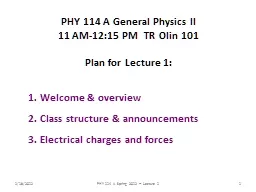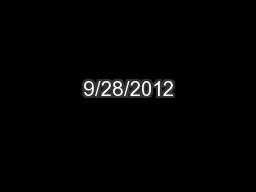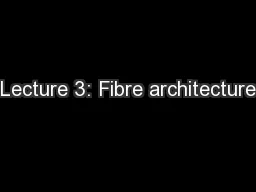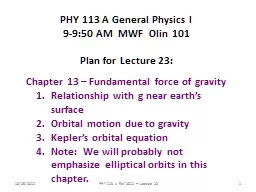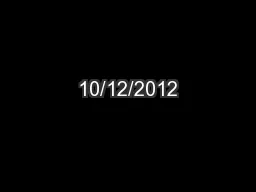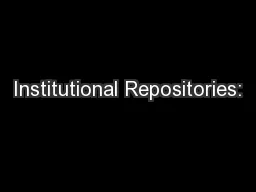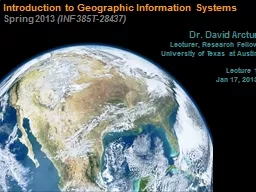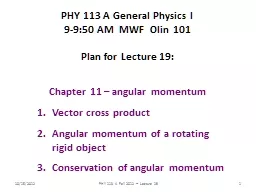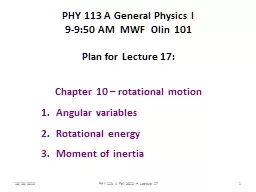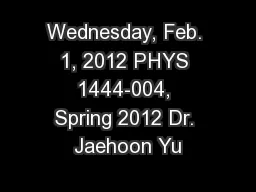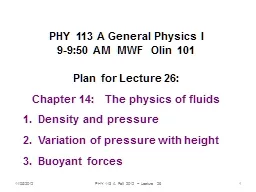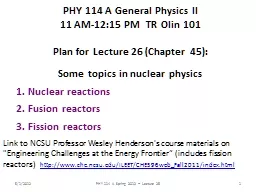PPT-1/18/2012 PHY 114 A Spring 2012 -- Lecture 1
Author : debby-jeon | Published Date : 2018-11-07
1 PHY 114 A General Physics II 11 AM1215 P M TR Olin 101 Plan for Lecture 1 Welcome amp overview Class structure amp announcements Electrical charges and forces
Presentation Embed Code
Download Presentation
Download Presentation The PPT/PDF document "1/18/2012 PHY 114 A Spring 2012 -- Lect..." is the property of its rightful owner. Permission is granted to download and print the materials on this website for personal, non-commercial use only, and to display it on your personal computer provided you do not modify the materials and that you retain all copyright notices contained in the materials. By downloading content from our website, you accept the terms of this agreement.
1/18/2012 PHY 114 A Spring 2012 -- Lecture 1: Transcript
Download Rules Of Document
"1/18/2012 PHY 114 A Spring 2012 -- Lecture 1"The content belongs to its owner. You may download and print it for personal use, without modification, and keep all copyright notices. By downloading, you agree to these terms.
Related Documents

